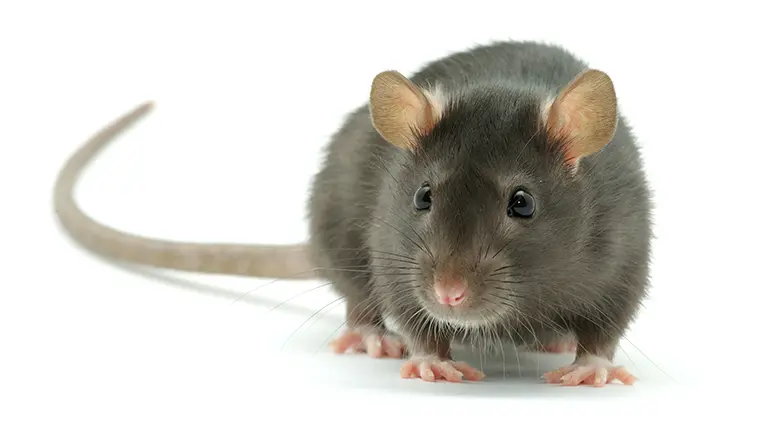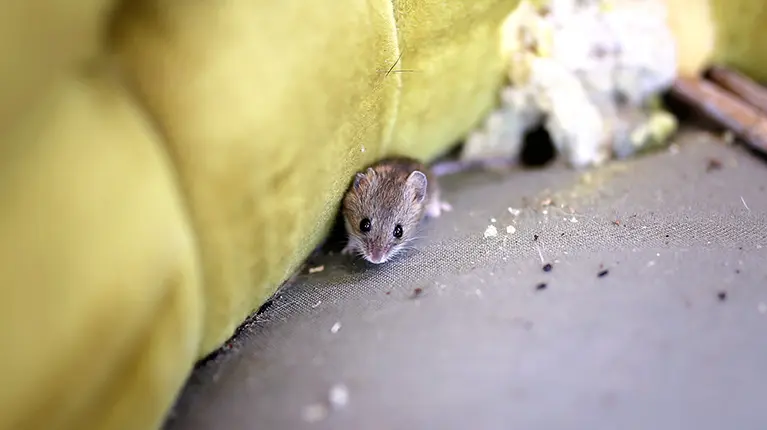Tips for rat disinfestation

Rodents constitute one of the most common pests worldwide. Count on Truly Nolen for an effective rat disinfestation service.
Rat extermination can be performed in public spaces, homes, schools, offices, manufacturing facilities and other buildings. Other locations where rat disinfestation is performed are agribusiness industries, wastewater systems, and other municipal or government facilities.
Rat disinfestation? It's time to call Truly Nolen!
Rats can transmit serious diseases such as rabies, plague, malaria, cholera, typhoid, hantavirus, typhus, Lyme disease, and salmonella. They can also trigger asthma attacks and other allergic reactions in humans.
A rat bite is dangerous and should be treated immediately by qualified medical personnel. But in addition to health problems, rats can contaminate food, gnaw on electrical equipment that causes fires, and destroy property.
These animals carry with them parasites such as fleas, mites, and lice, which in turn contaminate the places where we live or work.
So, if you have detected a rat infestation, urgent intervention is required. Our team will use specific methods and products for rat disinfestation, without risk to human health or pets. Truly Nolen is a specialist in rat disinfestations and pest control and is prepared to give you all the information on this subject.
How to distinguish mice from rats
Rats (Mus musculus) are small mammals known for their quickness of movement, intelligence and curiosity. They have a more daring behavior and a great survival instinct, with very keen senses of smell, touch and hearing. They act mostly at night, live in groups and communicate through ultrasound. This pest is capable of rapid reproduction, and may have up to 6 litters per year, between 5 and 12 offspring per litter, depending on the species.
Rats climb, run, swim, hide, and make their nests in small cracks and in dark places in the house, such as attics, false ceilings, behind appliances or furniture, etc.
Rats (Rattus norvegicus), on the other hand, are bigger and stronger than rats. They have a tail shorter than their body, smaller ears and eyes, incisor teeth, and thick fur. They leave grease marks wherever they go and are capable of chewing tough materials such as aluminum, wood, or cement. They are more cautious than rats and prefer places to live such as sewage systems, elevator shafts, or outdoor spaces. Each female can produce up to 10 litters per year, with 5 to 10 pups per litter.
Rats and mice are both rodents with nocturnal habits capable of causing serious damage, requiring a quick rat disinfestation service.

How to identify a rat infestation
Both mice and rats leave traces of their passage. Be on the lookout for the following signs:
- Torn food wrappers and food scraps.
- Small holes in walls and floors.
- Shiny, dark droppings and urine.
- Unexpected dirt and damage to food places.
- Gnawed clothing, furniture, and electrical wires.
- Bite and scratch marks.
- Noise of small footsteps and mouse prints.
How do rats get into the house?
Rodents are basically attracted to food and shelter. They look for places with abundant food, warm and away from rain, where they can nest. Humans' homes are excellent for rats: they offer warmth and shelter, nesting materials, crumbs and food scraps.
The garbage can is probably the first place rats explore, especially if it has no lid. Areas with food - such as pantries, cabinets or shelves, and animal feeders - are targets of their constant curiosity. They prefer fatty, high-protein foods with strong, sugary smells. But if they are hungry, they can eat just about anything, even leather and fabrics.
Watch and care for plants in and around your home, especially nut trees and fruit plants that may attract mice and serve as hiding places for them, and call us if you need mouse disinfestation.
What to do after a rat disinfestation
To prevent mice from invading again after a professional intervention, there are certain measures to follow:
- Do frequent cleaning in all areas with food.
- Store food in tightly closed containers.
- Seal doors and windows.
- Inspect roofs, plumbing, vents, vents, walls, etc., making sure there is no passage for mice.
- Keep outdoor areas such as gardens and balconies clean and with few hiding places.
- Remove potential nesting material: piles of paper and magazines, leaves, straw, building materials, etc.
- Keep trash can with lid tightly closed.
Looking for rat disinfestation specialists? Contact us!
Learn more about all of our disinfestation services.